Abstract
Using data captured as part of the routine care of outpatients taking the oral anticoagulant warfarin, we described variation in recording reasons for anticoagulation, selecting target International Normalized Ratio (INR) ranges, and performing coagulation blood tests. Laboratory results were directly captured by or entered into an Anticoagulation Flowsheet, a computer program which is fully integrated with our Online Medical Record (OMR). We studied the 177 patients with flowsheets between October 1993 and January 1995. 90% had a reason for anticoagulation entered; 29 different target INR ranges were entered. For patients with a target INR of 2.0-3.0, the mean number of weeks between blood tests, after a test which was in range, was three weeks (standard deviation 1.7 weeks, range one to twelve weeks). We conclude that routinely collected data contained in an electronic patient record (EPR) can be a rich resource for describing and evaluating clinical practice. We also address several limitations to using EPR data: validity of EPR information, lack of coded information, and imperfect capture of clinician thought processes.
Full text
PDF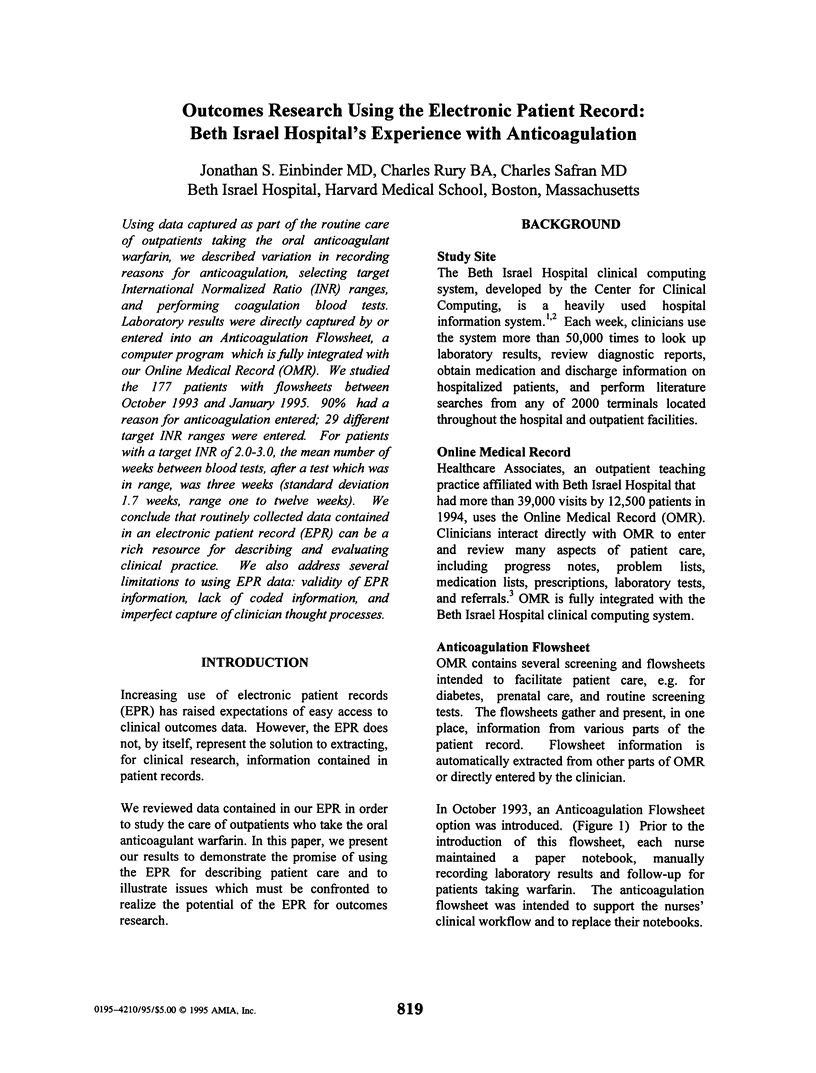
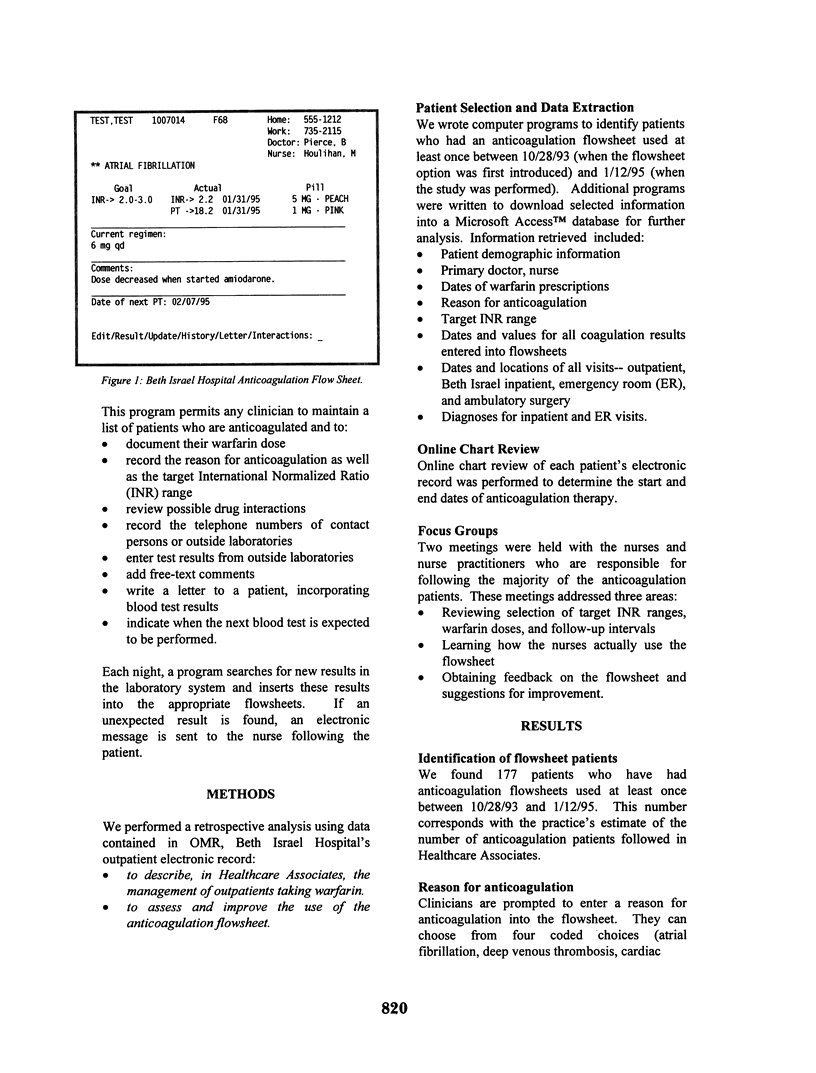
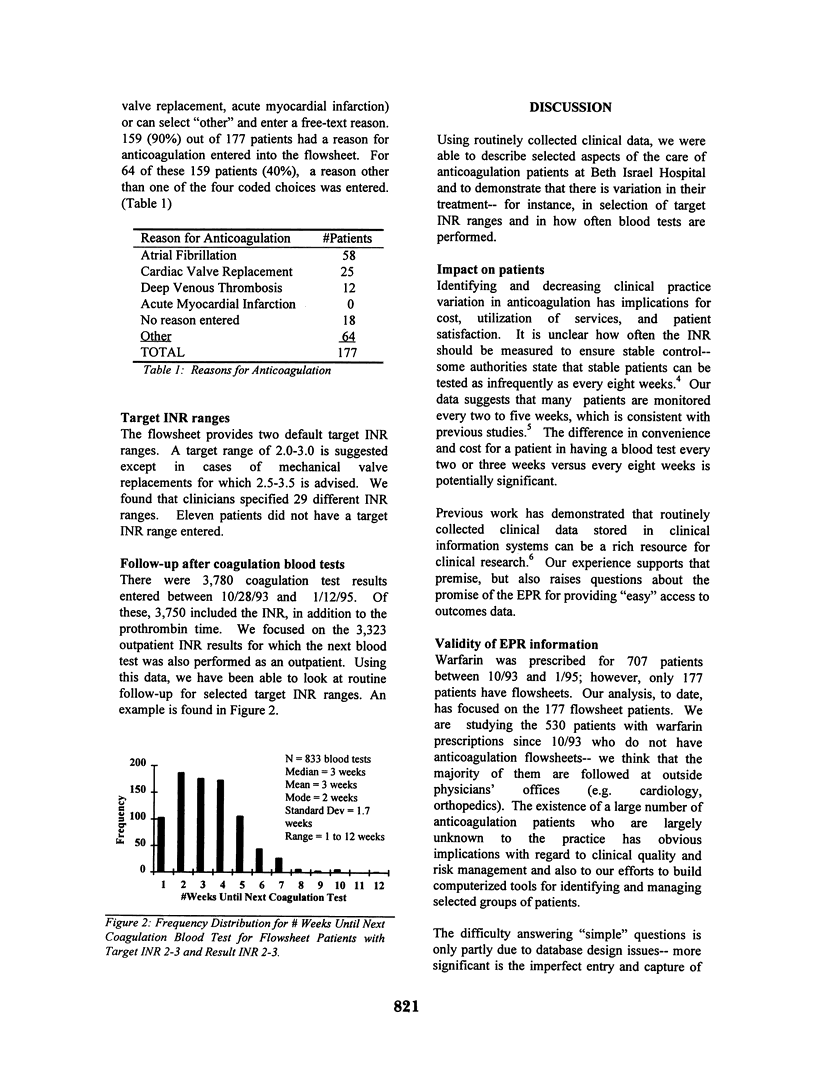
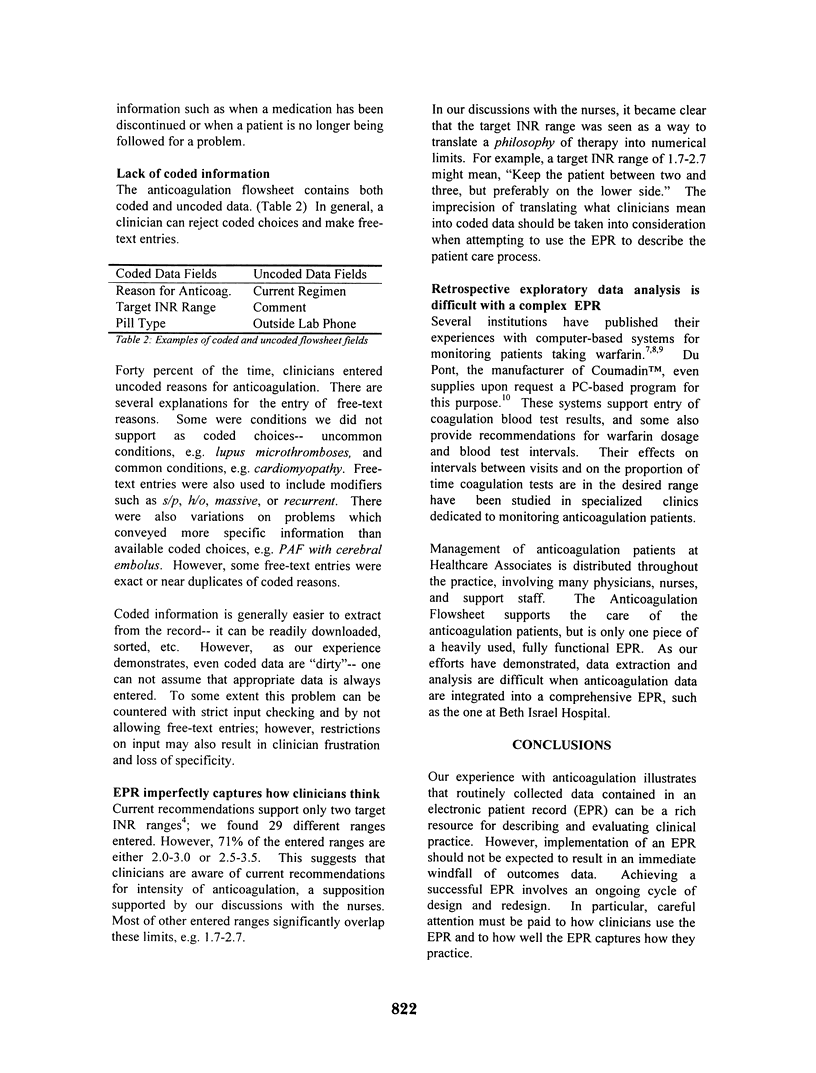
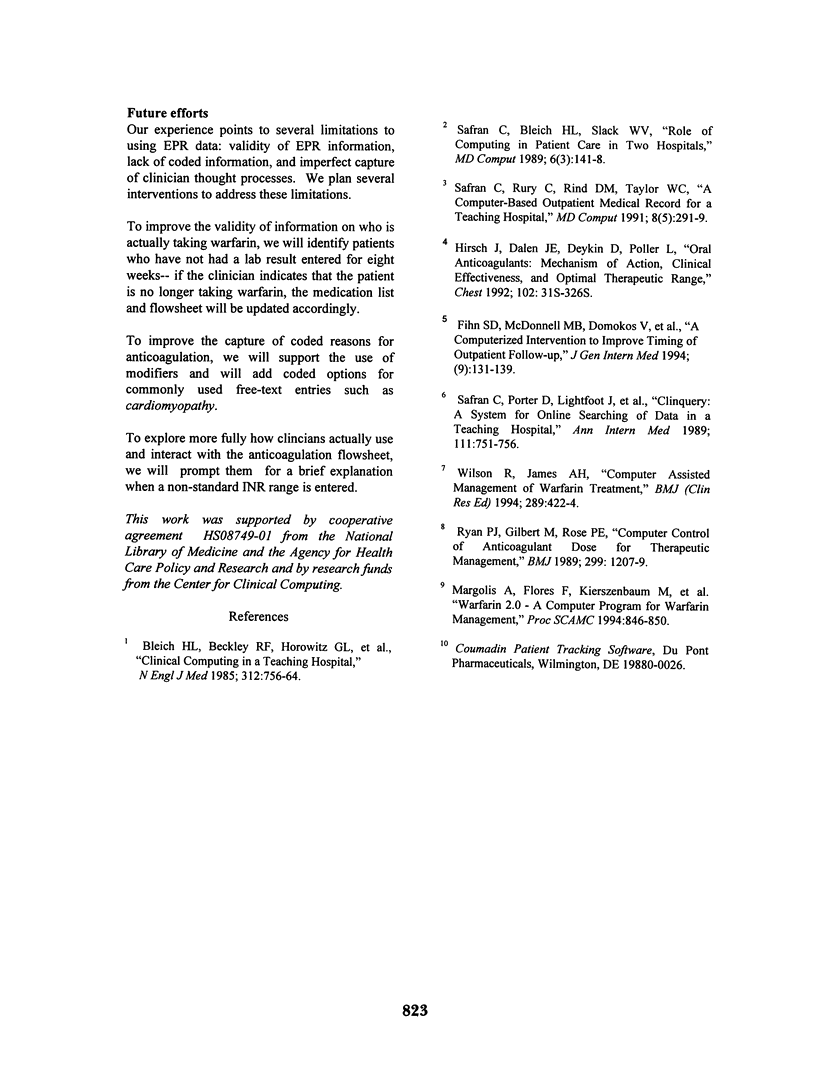
Selected References
These references are in PubMed. This may not be the complete list of references from this article.
- Bleich H. L., Beckley R. F., Horowitz G. L., Jackson J. D., Moody E. S., Franklin C., Goodman S. R., McKay M. W., Pope R. A., Walden T. Clinical computing in a teaching hospital. N Engl J Med. 1985 Mar 21;312(12):756–764. doi: 10.1056/NEJM198503213121205. [DOI] [PubMed] [Google Scholar]
- Hirsh J., Dalen J. E., Deykin D., Poller L. Oral anticoagulants. Mechanism of action, clinical effectiveness, and optimal therapeutic range. Chest. 1992 Oct;102(4 Suppl):312S–326S. doi: 10.1378/chest.102.4.312s. [DOI] [PubMed] [Google Scholar]
- Margolis A., Flores F., Kierszenbaum M., Cavallo Z., Botti B., D'Ottone E., Tavella N., Torres J. Warfarin 2.0--a computer program for warfarin management. Design and clinical use. Proc Annu Symp Comput Appl Med Care. 1994:846–850. [PMC free article] [PubMed] [Google Scholar]
- Ryan P. J., Gilbert M., Rose P. E. Computer control of anticoagulant dose for therapeutic management. BMJ. 1989 Nov 11;299(6709):1207–1209. doi: 10.1136/bmj.299.6709.1207. [DOI] [PMC free article] [PubMed] [Google Scholar]
- Safran C., Porter D., Lightfoot J., Rury C. D., Underhill L. H., Bleich H. L., Slack W. V. ClinQuery: a system for online searching of data in a teaching hospital. Ann Intern Med. 1989 Nov 1;111(9):751–756. doi: 10.7326/0003-4819-111-9-751. [DOI] [PubMed] [Google Scholar]
- Safran C., Rury C., Rind D. M., Taylor W. C. A computer-based outpatient medical record for a teaching hospital. MD Comput. 1991 Sep-Oct;8(5):291–299. [PubMed] [Google Scholar]
- Safran C., Slack W. V., Bleich H. L. Role of computing in patient care in two hospitals. MD Comput. 1989 May-Jun;6(3):141–148. [PubMed] [Google Scholar]
- Wilson R., James A. H. Computer assisted management of warfarin treatment. Br Med J (Clin Res Ed) 1984 Aug 18;289(6442):422–424. doi: 10.1136/bmj.289.6442.422. [DOI] [PMC free article] [PubMed] [Google Scholar]


